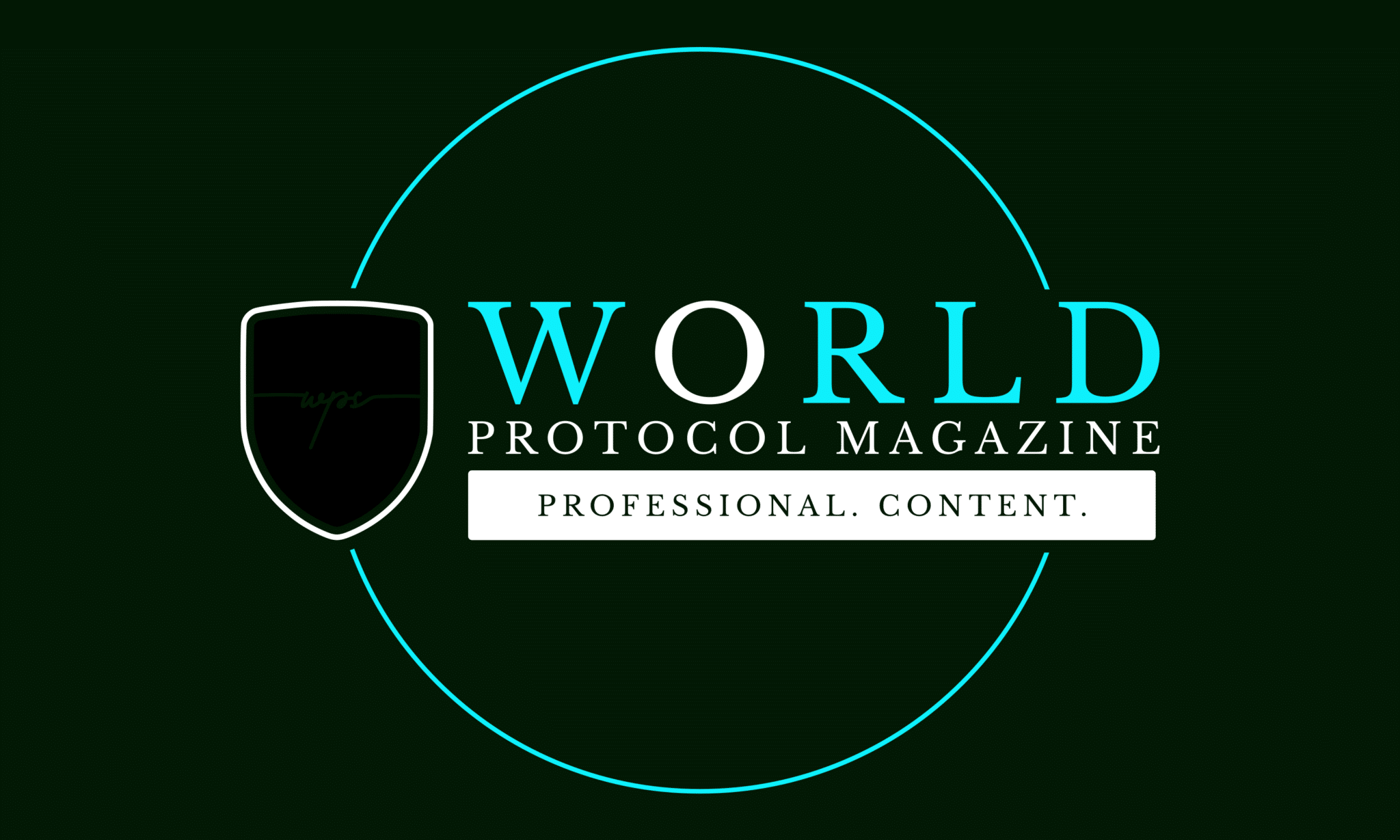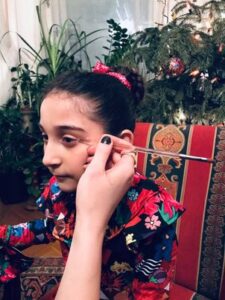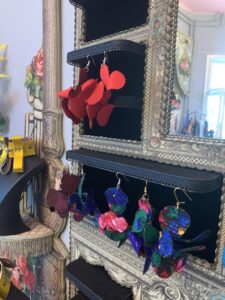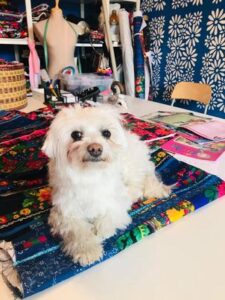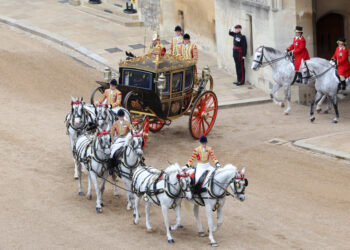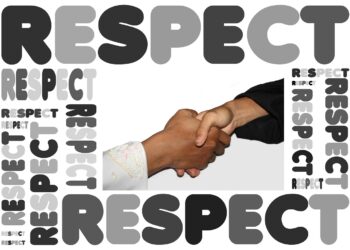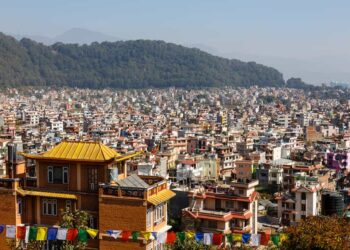 Fashion design means so much more than a few nice pieces of fabric these days: we send a message with our choice of clothing every day. Ms. Erika Varga, founder and artistic leader of the brand Romani Design is the epitome of purpose. She created the Romani Design brand with a very clear aim: to help the roma community, raise awareness of the importance of social acceptance, and support children in need. 11 years later, she possesses amazing awards (including the European Citizen’s Prize, awarded by the European Parliament in 2018), held fashion shows in numerous countries and took part in the Hungarian country image programs worldwide.
Fashion design means so much more than a few nice pieces of fabric these days: we send a message with our choice of clothing every day. Ms. Erika Varga, founder and artistic leader of the brand Romani Design is the epitome of purpose. She created the Romani Design brand with a very clear aim: to help the roma community, raise awareness of the importance of social acceptance, and support children in need. 11 years later, she possesses amazing awards (including the European Citizen’s Prize, awarded by the European Parliament in 2018), held fashion shows in numerous countries and took part in the Hungarian country image programs worldwide.
She works tirelessly, designing, mentoring, and managing the brand’s image all at once. The brand is without precedent in the entire world: nobody else created such an inclusive, bold initiative with the goals of unifying the roma community, sharing their culture of many wonders with everyone, and most importantly, building a cultural prestige for the roma heritage. Ms. Varga is an outstanding example of transforming a difficulty in life (growing up as a member of a minority) to a purpose, a mission. She makes an amazing role model to everyone, whether in the roma community or not: I consider myself terribly lucky to have had the opportunity to make this interview.
1: Can you recall the moment you decided to create Romani Design?
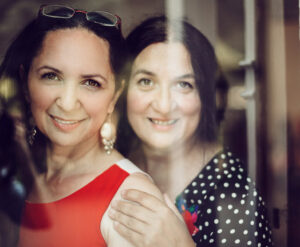 It was more like a process rather than a moment. We [Erika and her sister Helena, designer at Romani Design] were working in our goldsmith workshop, as practising artisans. Besides that, we had a few smaller projects concerning the roma community, mostly mentoring programs for roma children. We published Glinda Magazine for twelve years, sharing roma history, literature, linguistics, and tales… it was colourful, it used comics and graphics to share information. We loved working on that magazine. So, in a nutshell, the magazine and our goldsmith workshop were the two starting points in our journey of helping the roma community. Taking social responsibility has always been incredibly important for us, throughout the years we developed an emotional need for helping on the “bigger picture” and felt like we could do more. I, personally, wanted to do so much more: without exaggeration, members of the roma community and young people of roma heritage have to overcome very difficult obstacles in life. I felt like there is a lot to do here, every helping hand is needed. What is more, we really wanted to raise the public’s awareness of the many struggles the roma community is facing, generation to generation. This is how Romani Design was created: the idea sort of naturally came from what we were doing before: making jewellery is also a part of fashion. Clothes make a great surface for sharing visual messages and sensitizing. This helps us to spread our mission, the social acceptance of minorities in the country. This has always been very important to me.
It was more like a process rather than a moment. We [Erika and her sister Helena, designer at Romani Design] were working in our goldsmith workshop, as practising artisans. Besides that, we had a few smaller projects concerning the roma community, mostly mentoring programs for roma children. We published Glinda Magazine for twelve years, sharing roma history, literature, linguistics, and tales… it was colourful, it used comics and graphics to share information. We loved working on that magazine. So, in a nutshell, the magazine and our goldsmith workshop were the two starting points in our journey of helping the roma community. Taking social responsibility has always been incredibly important for us, throughout the years we developed an emotional need for helping on the “bigger picture” and felt like we could do more. I, personally, wanted to do so much more: without exaggeration, members of the roma community and young people of roma heritage have to overcome very difficult obstacles in life. I felt like there is a lot to do here, every helping hand is needed. What is more, we really wanted to raise the public’s awareness of the many struggles the roma community is facing, generation to generation. This is how Romani Design was created: the idea sort of naturally came from what we were doing before: making jewellery is also a part of fashion. Clothes make a great surface for sharing visual messages and sensitizing. This helps us to spread our mission, the social acceptance of minorities in the country. This has always been very important to me.
2: The brand creates unmeasurable value: the collections are showing the world just how versatile roma fashion is, while creating social conversations, creating bridges between ethnicities, and building Hungary’s image worldwide. In your personal opinion, what makes Romani Design’s role so unique in this field?
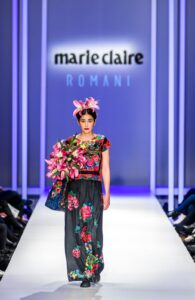 Yes, there are many things to mention here. Romani Design is a unique, unprecedented brand worldwide: before us, nobody created a brand specifically to promote and work with patterns from the roma culture, putting it to contemporary context. Ours was definitely a new perspective 10 years ago when the brand was created, and I think it still is. I believe we could show something new to the world, that had an effect on Hungarian contemporary fashion designers too, since now there are other designers and collections who are following our footsteps and got some inspiration from our work to create their own designs: I think this is wonderful and of great importance. This is what art, communities and networking is all about: inspiring and making impressions on each other, and why wouldn’t we? We had sort of a generator-effect in the industry.
Yes, there are many things to mention here. Romani Design is a unique, unprecedented brand worldwide: before us, nobody created a brand specifically to promote and work with patterns from the roma culture, putting it to contemporary context. Ours was definitely a new perspective 10 years ago when the brand was created, and I think it still is. I believe we could show something new to the world, that had an effect on Hungarian contemporary fashion designers too, since now there are other designers and collections who are following our footsteps and got some inspiration from our work to create their own designs: I think this is wonderful and of great importance. This is what art, communities and networking is all about: inspiring and making impressions on each other, and why wouldn’t we? We had sort of a generator-effect in the industry.
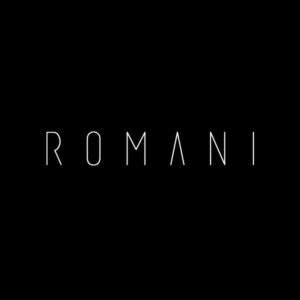
It is also important that we manage to come out with different collections every year while keeping our own “DNA” and identity in all of those collections: they are all unique, authentic, and recognizable, just like the brand itself. Every year, each of our collections have a theme, a message about our society and culture. We showed how fashion can act as a bridge, a common language between people with different backgrounds, social status, profession, and culture. Using fashion as the channel we can reach practically everyone, we can share our cultural and social messages as we did, about roma rights and communities. This method could be used with different causes too. Fashion could be so much more than just bare, idealised beauty.
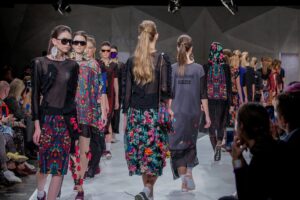
Sustainability and environmental consciousness also play a key role in our work: we believe that in order to protect our planet, our culture, and our future as humans, we should all act together on all levels in the fashion industry: designers, producers, and consumers as well.
3: Creating fashion pieces with such a strong message is an enormous responsibility. Do you have a favourite item among your collections?
In fact, we have many, I only have to look around! I am especially proud of our pieces inspired by Frida Kahlo. I believe Romani Design was the first brand in Hungary to work with this subject, her subject, creating our very own Frida Kahlo capsule collection. Those items have been very popular ever since. I think Frida Kahlo would be proud of these products herself. We have some personal favourites in the REBEL SPIRIT, ICON and MY IDENTITY, MY FREEDOM collections as well, but since the brand is now more than ten years old, we have sort of a “Best of” selection among ourselves, with pieces from almost every collection we have ever created, in some cases, more than one.
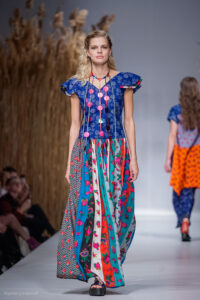 Our unisex pieces were also very popular. One more interesting fact about our collections: for quite a while now, not only the cuts of the dresses but the patterns are also our very own designs. They contribute to the brand’s image greatly, making patterns for our fabrics is a very important part of our job.
Our unisex pieces were also very popular. One more interesting fact about our collections: for quite a while now, not only the cuts of the dresses but the patterns are also our very own designs. They contribute to the brand’s image greatly, making patterns for our fabrics is a very important part of our job.
4: Fashion and diplomacy are frequently linked together. Last December, members of the Embassy of Hungary in the Philippines wore Romani Design accessories: can you tell us about that incredible “collaboration”?
I have known H.E. dr. Titanilla Tóth, present ambassador to the Philippines for years since she was working in Kuala Lumpur. We were invited by the Embassy of Kuala Lumpur; we did several exhibitions and pop-up stores while we were there. We even did a workshop at a school, it was fascinating. Before that, we travelled to India, to Mumbai and Delhi, we took part in numerous country-image projects in Brussels, Berlin, Lisbon, Bangkok, Sofia, Paris and many more…  I think these collaborations with Romani Design are extremely valuable because our country had the chance to showcase such a vibrant and colourful part of its culture, something other countries simply do not have. This sort of makes our brand a “Hungaricum” in that matter. I believe this is what those embassies recognized; how unique Romani Design is. There is not a brand like this anywhere else in the world, we can definitely call it a “Hungaricum”, a Hungarian specialty. We are incredibly proud of those projects, it is an immense honour to represent our country, our community and our cultural identity, these are truly once-in-a-lifetime opportunities.
I think these collaborations with Romani Design are extremely valuable because our country had the chance to showcase such a vibrant and colourful part of its culture, something other countries simply do not have. This sort of makes our brand a “Hungaricum” in that matter. I believe this is what those embassies recognized; how unique Romani Design is. There is not a brand like this anywhere else in the world, we can definitely call it a “Hungaricum”, a Hungarian specialty. We are incredibly proud of those projects, it is an immense honour to represent our country, our community and our cultural identity, these are truly once-in-a-lifetime opportunities.
5: Looking back at your career and the journey with Romani Design so far, what are you most proud of?
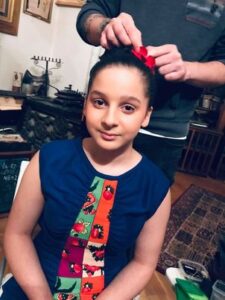 We actually have a ton of such things: I probably would not be able not list all of our amazing partnerships and collaborations. We regularly work with numerous prestigious museums in Hungary, including the National Gallery, the Treaty of Trianon Museum in Buda Castle, and the Museum of Fine Arts. We are also really proud of the country image projects we took part in. I think we were able to create projects of high standards. We were also part of many exhibition selections: one of the most important was Tár.hely 2.0, organised by the Budapest Hall of Art. It is an applied arts exhibition, taking place every five years. An incredible number of artworks were showcased there, but only two or three brands from the fashion industry were invited: one of them was Romani Design. Personally, what I am most proud of is that we could create a brand that represents roma fashion and stands for the richness and uniqueness of our culture. We shared this with not only our community but to a large international audience thanks to our brand. How well could traditional values and patterns be integrated to our everyday lives; how important their roles could be. We do not have to let them go forever- traditional values can be followed in the modern world. I think this is our most important message: we do not have to cut all ties with our backgrounds. This is not against moving forward, rather it helps us to stay true to ourselves in the process. Traditional, family values are also part of us, our lives. I believe this is a very important message for every community, what can keep families together. We should all think more about that, how important that aspect of life truly is. I am also proud of the fact that Romani Design inclusively represents the roma community throughout the incredibly versatile fashion and culture we try to share with the collections. Roma fashion and culture indeed exists, it is very much alive, and it is a very organic community.
We actually have a ton of such things: I probably would not be able not list all of our amazing partnerships and collaborations. We regularly work with numerous prestigious museums in Hungary, including the National Gallery, the Treaty of Trianon Museum in Buda Castle, and the Museum of Fine Arts. We are also really proud of the country image projects we took part in. I think we were able to create projects of high standards. We were also part of many exhibition selections: one of the most important was Tár.hely 2.0, organised by the Budapest Hall of Art. It is an applied arts exhibition, taking place every five years. An incredible number of artworks were showcased there, but only two or three brands from the fashion industry were invited: one of them was Romani Design. Personally, what I am most proud of is that we could create a brand that represents roma fashion and stands for the richness and uniqueness of our culture. We shared this with not only our community but to a large international audience thanks to our brand. How well could traditional values and patterns be integrated to our everyday lives; how important their roles could be. We do not have to let them go forever- traditional values can be followed in the modern world. I think this is our most important message: we do not have to cut all ties with our backgrounds. This is not against moving forward, rather it helps us to stay true to ourselves in the process. Traditional, family values are also part of us, our lives. I believe this is a very important message for every community, what can keep families together. We should all think more about that, how important that aspect of life truly is. I am also proud of the fact that Romani Design inclusively represents the roma community throughout the incredibly versatile fashion and culture we try to share with the collections. Roma fashion and culture indeed exists, it is very much alive, and it is a very organic community.
6: With so many extraordinary accomplishments so far, what are your future plans with the brand? Can you give us a little insight on the next Romani collection?
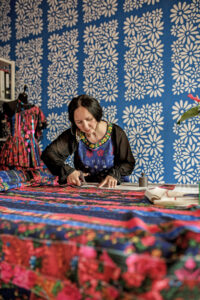
I unfortunately cannot share many details yet, but we are indeed working on a new collection, a collaboration with the Museum of Applied Arts. The exhibition is titled ‘Körforgásban’ (in circulation), and we are going to be the next Hungarian exhibitors. Our main themes will be family, traditions and faith, especially the Madonna-depiction on paintings. It will be released later in September in the György Ráth villa, while the museum itself is under renovation. This partnership is very dear to us, we are working clothes with a brand-new theme and style, with a touch of a previously covered subject of one of our current collections. We have designed some beautiful new prints, inspired by the database of the Museum of Applied Arts. This is the main goal of this partnership, choosing a few objects from the museum’s collection and get a new kind of inspiration from them, from their details. In October, the Budapest Central European Fashion Week is to take place: hopefully, we can present the entire new collection in person, with all pandemic regulations kept in mind. We have been among the permanent presenters of BCEFW for many years now and we are very much looking forward to the new show this year!
7: Romani Design has an amazing support program for roma children. What advice would you give to young girls, planning on making a career in fashion design?
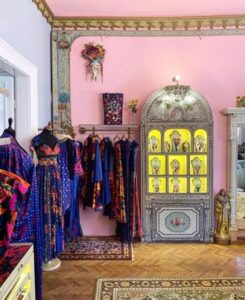 Our mentoring program is very important to me personally, I have been taking part in it since I was eighteen years old. I think it is of great importance that young roma people with disadvantaged backgrounds have the opportunity to meet professionals and experts from all parts of life in person. It may inspire them to imagine themselves as future professionals in fields they did not even know existed before or thought it was impossible for them to reach. That is why it is important to give those young people as much inspiration as possible: we simply cannot learn everything from books, or at school. These young children need experiences, personal stories, and a support system to help them achieve more. I also held programs like these when I worked at the goldsmith workshop: it is a wonderful profession, but it is not for everyone. It is an important thing to know when one is choosing a job: you need to try it first to know if you are cut out for it. That is why we do mentoring programs like these for roma children, to give them an idea, a perspective about the fashion industry in general, all stages of our work, including sewing and so on. Even if they end up choosing a different path, they can still learn a lot: art helps them to grow their discipline, patience, and persistence, it improves their creative thinking, fine and gross motoric skills. Art has so much to offer, it creates a bridge and builds character and teaches numerous practical skills, like how to use a sewing machine or tailoring scissors and how to plan something before you start working on it. It would be a waste not to make use of that side of our work if we could help others with it. Our profession involves working with many others: hairdressers, make-up artists, models, actors, photographers, and stylists are all part of our work, and we try to introduce as many of them to children in our programs as possible. Meeting with authentic experts of any particular field can make a lifelong impact on them, especially when it comes to choosing a career path or pursuing higher education. We hope that if we think and work together, we can really move forward in helping them and most importantly, giving them options to choose from regarding their future. Supporting and funding civil initiatives and organisations would also be crucial. Big changes start with small steps- and everyone could take part in it, regardless of their social status or held rank. After all, giving back is not only the backbone of every community, but also a pillar of sustainability too.
Our mentoring program is very important to me personally, I have been taking part in it since I was eighteen years old. I think it is of great importance that young roma people with disadvantaged backgrounds have the opportunity to meet professionals and experts from all parts of life in person. It may inspire them to imagine themselves as future professionals in fields they did not even know existed before or thought it was impossible for them to reach. That is why it is important to give those young people as much inspiration as possible: we simply cannot learn everything from books, or at school. These young children need experiences, personal stories, and a support system to help them achieve more. I also held programs like these when I worked at the goldsmith workshop: it is a wonderful profession, but it is not for everyone. It is an important thing to know when one is choosing a job: you need to try it first to know if you are cut out for it. That is why we do mentoring programs like these for roma children, to give them an idea, a perspective about the fashion industry in general, all stages of our work, including sewing and so on. Even if they end up choosing a different path, they can still learn a lot: art helps them to grow their discipline, patience, and persistence, it improves their creative thinking, fine and gross motoric skills. Art has so much to offer, it creates a bridge and builds character and teaches numerous practical skills, like how to use a sewing machine or tailoring scissors and how to plan something before you start working on it. It would be a waste not to make use of that side of our work if we could help others with it. Our profession involves working with many others: hairdressers, make-up artists, models, actors, photographers, and stylists are all part of our work, and we try to introduce as many of them to children in our programs as possible. Meeting with authentic experts of any particular field can make a lifelong impact on them, especially when it comes to choosing a career path or pursuing higher education. We hope that if we think and work together, we can really move forward in helping them and most importantly, giving them options to choose from regarding their future. Supporting and funding civil initiatives and organisations would also be crucial. Big changes start with small steps- and everyone could take part in it, regardless of their social status or held rank. After all, giving back is not only the backbone of every community, but also a pillar of sustainability too.
For further information, please check https://romani.hu/en/ and https://www.instagram.com/romanidesign/
Source of pictures:
1, 2, 3, 4,5, 6, 9, 10, 11, 13: https://www.facebook.com/romanidesign and Erika Varga (https://www.facebook.com/erika.varga.9484 )
8: BOOOK Kiadó / Bodnár Zsófia
12: The Author’s own (Lili Kriston)
